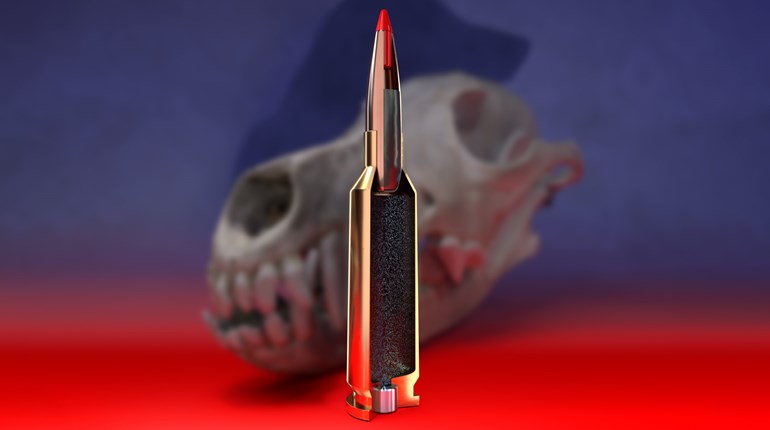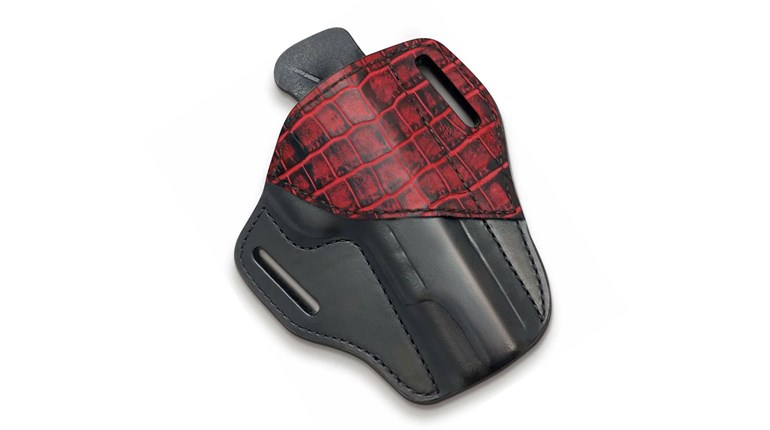
At no other office in the world is there more daily discussion and debate over firearms than here at the NRA. It's not uncommon for a passerby, with firearm in hand, to draw editors out from behind their desks for an impromptu bull session on the gun's merits or faults. In my career here, no other gun/caliber has generated more ire, angst and derision than the Frabrique Nationale Herstal PS90 carbine and the 5.7x28 mm cartridge.
FN recently introduced a semi-automatic version of this blowback-operated bullpup carbine that has seen service in several European armies, special forces units and police departments. When first introduced, many speculated the gun, ammunition and companion FiveseveN pistol would never make it to the civilian market. Now, all three are here and making a splash.
The idea was born from NATO's desire to equip support personnel with a weapon that would better the performance of a 9 mm pistol or submachine gun. This is not a battle rifle, but a gun for truck drivers, tankers, radar operators—anyone needing more power than a pistol in an ultra compact package. As for civilians who like guns, it is functional and fun to shoot. There are those who cry practicality and need. Sure there are better guns for this and that, but the PS90 is a marvel of design, fun and cool. And when was it ever about need?
FN's PS90 is modular, and the components all fit in or around a polymer stock that measures 18 inches long. Parts that are affixed to the stock and do not come out when the gun is field stripped, include the trigger, trigger bars and safety. Its hammer group, removed and installed by flipping up a small, spring-loaded lever, fits into the rear of the stock and is completely plastic save a few springs, pins and extras. It is held in place by the buttplate. This is the first component placed in the stock when assembling the carbine.
The receiver—frame, upper or group might be a more appropriate term—includes the barrel, sighting system and charging handle. It is cast and anodized black. The barrel of the civilian version is a shade more than 16 inches long. A 2-5⁄8-inch-long flash hider is threaded on and brings the total length to just over 18 inches.
The ambidextrous charging levers' return spring is held captive in the receiver body by the barrel. They slide back into the stock to move the bolt over the hammer group and do not move during firing.
When assembling the gun, the bolt group fits into the stock before the receiver and rides on two parallel .315-inch steel pins—guide rods if you will—that hold the recoil springs captive and are kept in place by both the bolt and a plastic "rear end" piece with a protrusion that mates with a hole in the buttplate. The forward ends of those rods are beveled and mate with two matching holes in the receiver. The bolt's face rests against a barrel extension. A claw extractor lies at 6 o'clock and a plunger-type ejector at the 12 o'clock position. Two snap rings hold the bolt captive when disassembled.
The bolt has one interesting feature. A separate steel cylinder under rearward spring pressure sits in a milled recess in the bolt and rides the left guide rod. This piece uses its inertia at the end of the firing cycle to help seat the bolt against the barrel extension.
Once it is placed into the stock body, the receiver is held in place by a large detent button that pops up through a hole in the top of the stock. A tang at the front of the receiver has a hole in it that aligns itself with a nipple molded into the stock for a front lockup. Pop one of the translucent, flat magazines into place and you are ready to go. It only takes about 15 seconds to completely field strip the PS90.
Though it was originally designed to hold 50 rounds, civilians will get only 30-round magazines. Those of you living in more restrictive states get only 10. The double-stacked rounds are perpendicular to the bore's axis and make clockwise turn in a turret on the magazine above the bolt. As odd as it sounds, they feed fine and are easy to load. Spent rounds eject from the bottom, behind the shooting hand.
The thumb of the off hand can go through the same hole as the trigger finger or rest along the stock beside the cocking handle. Either position puts the shooter's hands very close together. The safety, located below the trigger, is easily manipulated from either side.
I shot the PS90 offhand, walking to the target, stopping and firing every 10 yards. The gun points well and handles fast. Shooting off the bench was interesting—it took a weird combination of bags and bench position to get the sights on target and the empties to eject on the ground. It is unlike anything I have ever fired.
The sights, at least those provided on this version, were abysmal. Looking through the tiny, zero magnification reflex sight, the reticle was hard to pick up. It is a smokey white color and does not stand out well in dim light. An tritium-powered reticle is supposed to take over, but it, too, was difficult to see. I think this greatly hampered my efforts to shoot good groups during the accuracy test. A version with 1913 Picatinny rails is offered and gets my nod. An Aimpoint or EOTech would be the ticket—and you might as well toss in a SureFire for good measure. For the worst-case scenario, a set of back-up irons is cast into the receiver for both left- and right-hand shooters.
And while I am complaining, the trigger was a bit heavy at 7 pounds, 5 ounces and traveled like a young Marco Polo. Five, five-shot groups of SS196—a polymer tipped, 40-grain bullet from Hornady moving at an average of 2,367 feet per second at the muzzle—shot into 2 inches at 50 yards. I think the gun can do better, despite the trigger with an optic. Several other ammo options are available, though the armor-piercing rounds are not available to civilians. Ammo should be much easier to find in the next coming months, but it was tough to come by and expensive at the time of this test.
We do not have the space here to address wounding profiles and temporary stretch cavities or compare the 5.7x28 mm the 9 mm or 5.56x45 mm NATO. If you put the shots where they need to go, it will get the job done on varmints with two legs or four. The gun makes a great plinker or truck gun and can be shot by anyone big enough to pull through that 7-pound trigger because recoil is nil. It is not all that practical, but neither are many of my other guns. The cool factor is off the charts and you will be the envy of every kid on the block if you get one first.






































